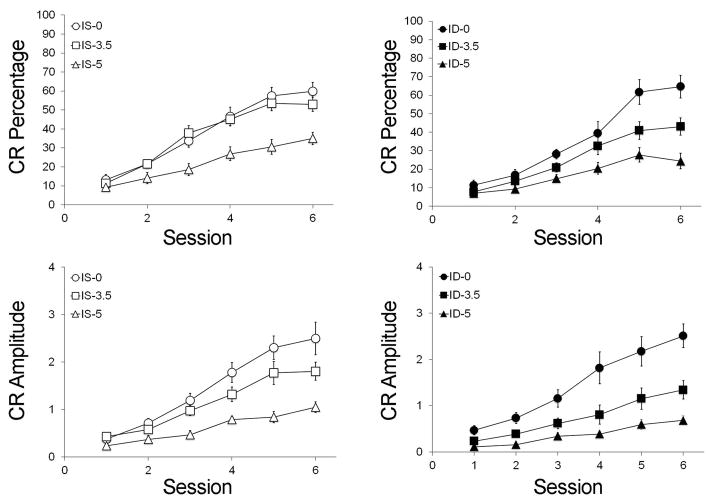Figure 2.
Trace eyeblink classical conditioning between rats in the iron-sufficient (IS, open symbols, A, C) and iron-deficient (ID, closed symbols, B, D) groups as a function of alcohol dose (○● 0 g/kg, □■ 3.5 g/kg, △▲5 g/kg; n = 10–12 animals per treatment group; error bars represent S.E.M.). Separately, alcohol and ID significantly affected learning acquisition in terms of conditioned response (CR) percentage (A, B) and amplitude (C, D) during paired training with the CS and US. Due to the inherent difficulty with acquiring CRs in trace ECC compared to delay ECC, the overall percentages and amplitudes are lower for all groups. ID-3.5 and ID-5.0 animals were more significantly impaired in acquiring CRs than their same-dose counterparts. Differences in learning were not detected between ID-0 and IS-0 animals. Conversely, the impact of moderate or heavy alcohol exposure (3.5 g/kg and 5 g/kg) on learning was mitigated by an iron-sufficient diet.

